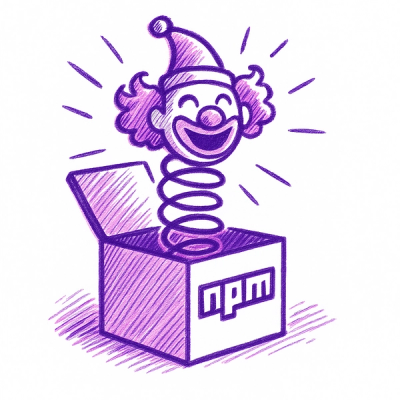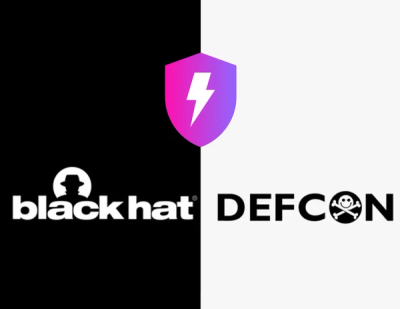Table of contents
Introduction
BrainBox provides easy HTTP access to a set of curated Docker containers
with AI-systems processing images, texts and sounds.
It comes with API endpoints to build the container and download basic models,
self-tests and documentation, as well as unified access to all the models.
The main use case is fast prototyping of small AI-driven products:
managing chats in messengers, self-hosted voice assistants,
media processing (translation, covering images), etc.
BrainBox is open-source and self-hosted, so no external APIs are needed.
BrainBox is not a production-ready solution. Do not use it in production environment,
since it doesn't have any security features, isn't really compatible with high and even
moderate load, and at the same time may have a big impact on the system's resources.
The suggested use of BrainBox is your own home machine,
where the security is provided on the network, not application, level.
Ideally, this machine would have a decent GPU unit: many AI-systems do not require GPU,
but some (the most interesting ones, of course) are practically useless without it,
and few won't even run.
Included deciders
There are many! Once you install BrainBox, you will have all these AIs privately and free of charge on your machine,
accessible via user-friendly Python API, or by simple HTTP requests.
At some point, BrainBox will have a comprehensive documentation for each of them, but we're not there yet.
So here is a short description.
Text-to-speech
Best choice:
- Piper - fast and resource-efficient text-to-speech.
Lots of languages are supported.
- Zonos - ultimate solution for artistic voice-cloning.
Perfect results in terms of quality and stability.
- PiperTraining: a container to train models for Piper.
Other solutions:
- OpenTTS provides a decent baseline for English language with VITS model, other languages are supproted as well.
- CoquiTTS is a framework supporting many different models.
That includes VITS as well as YourTTS, and, of course, their own XTTS, that can do a good voice cloning.
- TortoiseTTS Good voice cloning, still very slow, but not as slow as it used to be, English-only.
- OpenVoice - lighter option for voice cloning, moderate quality.
Speech-to-text and voice analysis
- Whisper is a de-facto standard.
- Kaldi, which we use via its implementation in Rhasspy,
provides much faster and accurate result over the closed grammar and vocabulary.
It is not really a general solution for STT, but is perfect for home assistants.
- Resemblyzer does speaker identification.
- Vosk - can be faster than Whisper,
also the results have more direct connection to the audio, e.g. each word is located to timestamps.
LLM and text processing
- Ollama, a de-facto standard for LLM management, is supported.
- EspeakPhonemizer converts text to phonemes for many languages.
Mainly here because of how troublesome it is to install it on Windows.
Image generation and processing
- ComfyUI, a standard for image generation, is supported
- YOLO is used for fast object detection with neural netowrks.
- WD14Tagger describes the images with the tags.
Also available in ComfyUI, but has some additional perks.
- VideoToImages converts video to a series on images, allowing to select most sharp frame and to skip similar frames.
- KohyaSS is used to train LoRA for image generation.
Installation
Docker
You need Docker installed in your system,
and the access granted to the current user to run docker from command line without elevated privileges.
The command
docker run hello-world
should work successfully and produce the text starting with "Hello from Docker!"
Python environment
Anaconda is recommended to manage Python's
environments. Create an environment for e.g. Python 3.11 (BrainBox is tested with 3.10-3.13 Python versions):
conda create --name brainbox python==3.11
Then, activate the environment
conda activate brainbox
BrainBox
Install the brainbox
pip install kaia-brainbox
Run the brainbox
python -m brainbox.run --data-folder <where_all_files_will_be_stored>
You should see something like:
* Serving Flask app 'RPC_BrainBoxService'
* Debug mode: off
WARNING: This is a development server. Do not use it in a production deployment. Use a production WSGI server instead.
* Running on all addresses (0.0.0.0)
* Running on http://127.0.0.1:8090
Please check the Troubleshooting session if instead you see something like this:
* Serving Flask app 'RPC_BrainBoxService'
* Debug mode: off
Address already in use
Port 8090 is in use by another program. Either identify and stop that program, or start the server with a different port.
Run the build-in test. It will make sure that all the functions, mentioned in this README, work correctly
python -m brainbox.run_test
If you see ALL GOOD in the end, it means BrainBox is installed and ready.
Troubleshooting
If the port is busy:
- Maybe the port
8090 assigned to other application in your system. In this case, use --port argument to both
brainbox.run and brainbox.run_test commands.
- Maybe you try to run the second instance of the BrainBox on the same port. Don't do it.
- Maybe you were running BrainBox before and shut it down incorrectly.
In this case, check your processes and kill those from
python.
Or simply restart the machine.
Python's API
This is the simplest way to access the BrainBox functionality.
To use it, simply install BrainBox to your project with pip install brainbox
To execute the following code, you need to run BrainBox and keep it running.
Note, that the code below is also part of the tests and is located at /doc.
In this documentation, regions from this test are copy-pasted,
along with asserts for better understanding of returned values,
so test_case represents a unittest TestCase instance.
Basic techniques
These are the operations you use for all the deciders all the time you work with BrainBox.
Create an API object
from brainbox import BrainBox
api = BrainBox.Api("127.0.0.1:8090")
api.wait(1)
This will create an API object. wait will try to connect to the endpoint
for 1 second, and raises if unsuccessful.
Install the decider
We have a HelloBrainBox decider, that doesn't do anything useful,
but accumulates all the features BrainBox has for deciders.
Let's install the decider:
from brainbox.deciders import HelloBrainBox
report = api.controller_api.install(HelloBrainBox)
test_case.assertIsNotNone(report)
Note that the container is not pulled, but build on your machine,
and this is also the case for other deciders.
This is resource-intensive, in terms of bandwidth and time,
but allows you to modify the containers quickly
if you require some model's functionality that wasn't implemented.
Also it allows BrainBox to work completely independently,
with the source code only, without reliance to the external
docker repositories; and finally, it's much easier to check what
these containers are doing.
Returned report can largely be ignored, it's only needed for
GUI purposes.
Run a self-test
The self-tests for the deciders run the most important endpoints,
and ensure their correct work.
Also, they provide a report where you can see the inputs and outputs
for the endpoint, so it is documentation of some sort.
This report can be viewed as an HTML page.
This will run a self-test and opens the result in the web-browser.
import requests, webbrowser, tempfile
from pathlib import Path
api.controller_api.self_test(HelloBrainBox)
self_test_report = requests.get(f'http://{api.address}/html/controllers/self_test_report/HelloBrainBox').text
test_case.assertIsInstance(self_test_report, str)
test_case_test_path = Path(tempfile.gettempdir()) / 'test_report.html'
with open(test_case_test_path, 'w', encoding='utf-8') as file:
file.write(self_test_report)
and then:
webbrowser.open('file://'+str(test_case_test_path))
While self-test reports provide some understanding of the endpoints,
I recommend reading the self-tests code: all the endpoints are called
in the same way you will call them from your Python code.
Self-tests, building containers and other container-related things
are performed by Controller classes. They are usually located
within deciders classes, e.g. HelloBrainBox.Controller
Call an endpoint
This will execute the method HelloBrainBox::json on the server side.
result = api.execute(BrainBox.Task.call(HelloBrainBox).json("Hello"))
test_case.assertDictEqual(
{
'argument': 'Hello',
'model': 'no_parameter',
'setting': 'default_setting'
},
result
)
The BrainBox will run the container for the HelloBrainBox decider.
This container has a web-server inside, and HelloBrainBox::json
connects to this web-server and performs the required operation.
The result (in this case, dict) is then returned to the caller.
As you see, argument equals to the argument the code provides.
BrainBox is smart and tries to minimize the containers' runs.
If several tasks for same decider have arrived,
this decider will be set up, and then all these tasks will be executed
before the tasks for other deciders.
Call an enpoint with a parameter
Few deciders have parameters: a string argument that will be fed to the container
on the start, and may modify its behaviour. It's sometimes required
when you don't build container from scratch, but use a ready container,
which requires you to load the model on the startup, and in this case,
parameter is this model's name.
To pass the parameter, simply add it to call function:
result = api.execute(BrainBox.Task.call(HelloBrainBox, "parameter").json("Hello"))
test_case.assertDictEqual(
{
'argument': 'Hello',
'model': 'parameter',
'setting': 'default_setting'
},
result
)
As you can see, the model field is now set to parameter.
Most of the deciders do not have the parameter and load models dynamically, so normally you write
BrainBoxTask.call(DeciderClass).method(...)
Please ignore the setting field.
There is a possibility to adjust settings to the controllers,
such as the port the internal web-server will be assigned for,
or the list of models the controllers need to download,
but so far there was never a necessity to adjust them manually.
They are only used with the default values.
Download files, produced by deciders
Many BrainBox deciders return files with generated images or sounds.
In order not to overload the BrainBox database with all these
gigabytes, the files are stored in the cache folder,
and only files' names are returned.
filename = api.execute(BrainBox.Task.call(HelloBrainBox).file("Hello, file!"))
test_case.assertIsInstance(filename, str)
You may open this file with api.open_file method, which returns File
instance, reading the content of the file on the fly.
from brainbox import File
import json
file = api.open_file(filename)
test_case.assertIsInstance(file, File)
test_case.assertDictEqual(
{
'argument': 'Hello, file!',
'model': 'no_parameter',
'setting': 'default_setting'
},
json.loads(file.content)
)
If you don't want to open the file, only download it on the disk:
from pathlib import Path
path = api.download(filename)
test_case.assertIsInstance(path, Path)
with open(path, 'r') as stream:
test_case.assertDictEqual(
{
'argument': 'Hello, file!',
'model': 'no_parameter',
'setting': 'default_setting'
},
json.load(stream)
)
which simply downloads the file on the disk to the given location
(by default, in the API's cache folder), and returns the full path to file.
You may specify the location and the flag to redownload the file even
if it was already downloaded.
Upload files, required by deciders
Some deciders, especially speech-to-text or image analysis,
use files as inputs. You may feed them directly in the call:
from brainbox import File
file = File('hello.txt', "Hello, world!")
test_case.assertEqual(file.name, 'hello.txt')
test_case.assertEqual(file.content, b'Hello, world!')
length = api.execute(BrainBox.Task.call(HelloBrainBox).file_length(file))
test_case.assertEqual(length, 13)
However, that has the potential to overload the database as well,
and should be avoided.
If you run BrainBox server at the machine you're running api,
you may pass the path of the file:
import tempfile
from pathlib import Path
path = file.write(tempfile.gettempdir())
test_case.assertIsInstance(path, Path)
length = api.execute(BrainBox.Task.call(HelloBrainBox).file_length(path))
test_case.assertEqual(length, 13)
This solution is dirty as it won't work with a remote BrainBox,
and would force you to rewrite your codebase in case of such change.
To avoid this, you may choose to upload the file to the BrainBox
cache folder instead:
api.upload(file.name, file)
length = api.execute(BrainBox.Task.call(HelloBrainBox).file_length(file.name))
test_case.assertEqual(length, 13)
Sometimes, files are required to have specific names, or some
recoding. In these cases, deciders usually have static methods
that incapsulate these procedures in Prerequisites:
upload_prerequisite = HelloBrainBox.file_upload(file)
upload_prerequisite.execute(api)
length = api.execute(BrainBox.Task.call(HelloBrainBox).file_length(file.name))
test_case.assertEqual(length, 13)
Advanced techniques
Browse the resources
Many deciders have resources: files, typically model files, that are passed to the containers and used for inference.
It is impractical to store them inside containers, and so BrainBox stores them in the host's file system:
each decider has its own resource folder, which is mounted to the container.
Aside from models, the training data may be stored in resources instead of file cache, as training data
are easier to organize with folder structure and predictable filenames.
This endpoint demonstrates that the server indeed has an access to the resources:
HelloBrainBox reads them and returns the dictionary of keys set to filenames,
and values set to file content.
These resources are created by HelloBrainBox controller as a part of installation procedure.
resources = api.execute(BrainBox.Task.call(HelloBrainBox).resources())
test_case.assertDictEqual(
{'nested/resource': 'HelloBrainBox nested resource', 'resource': 'HelloBrainBox resource'},
resources
)
However, a uniform access to all the resources is provided by API, e.g. to list all the resources:
resources = api.controller_api.list_resources(HelloBrainBox, '/')
test_case.assertListEqual(
['resource', 'nested/resource'],
resources
)
Download a custom model
Many deciders can run with different models, and these models need to be downloaded.
All the deciders load some models at the installation time to allow self-test to run.
However, more models are usually needed.
Sometimes the containers are able to download these models themselves,
but often enough the models need to be downloaded separately.
This action can be triggered via api:
api.controller_api.download_models(HelloBrainBox, [HelloBrainBox.Model('google', 'http://www.google.com')])
resources = api.controller_api.list_resources(HelloBrainBox, '/models')
test_case.assertListEqual(['models/google'], resources)
Build a workflow from tasks
The output of the tasks can serve as an input to other tasks:
task1 = BrainBox.Task.call(HelloBrainBox).json("Hello")
task2 = BrainBox.Task.call(HelloBrainBox).json(task1)
result = api.execute([task1, task2])
test_case.assertDictEqual(result[0], result[1]['argument'])
In this case, the task1 will be executed before task2 and the output of task1 will be used
as an argument for task2 method.
Collect the outputs of many tasks
One particularly important use case of the dependent tasks is when
several tasks are run, each associated with some tags describing a task,
and then the outputs of all tasks are collected together and returned as a single entity.
Collector does just this. Declaring collector tasks in a raw form is very cumbersome,
and we actually use helpers to do this,
however, it helps to see what's going on under the hood.
from brainbox.deciders import Collector
from brainbox import BrainBoxCombinedTask
id1 = BrainBox.Task.safe_id()
id2 = BrainBox.Task.safe_id()
task1 = BrainBox.Task.call(HelloBrainBox).json(0).to_task(id=id1)
task2 = BrainBox.Task.call(HelloBrainBox).json(1).to_task(id=id2)
collector = BrainBox.Task.call(Collector).to_array(
tags = {id1: dict(index=0), id2: dict(index=1)},
** {
id1: task1,
id2: task2
}
)
pack = BrainBoxCombinedTask(
resulting_task = collector,
intermediate_tasks = (task1, task2)
)
array = api.execute(pack)
for item in array:
test_case.assertIsNone(item['error'])
test_case.assertEqual(item['tags']['index'], item['result']['argument'])
Method BrainBox.Task.safe_id creates uuid4 and converts it in python literal so it can be used in **kwargs.
We can shorten this significantly with Collector.TaskBuilder:
builder = Collector.TaskBuilder()
for i in range(10):
builder.append(task=BrainBox.Task.call(HelloBrainBox).json(i), tags=dict(index=i))
pack = builder.to_collector_pack('to_array')
array = api.execute(pack)
for item in array:
test_case.assertIsNone(item['error'])
test_case.assertEqual(item['tags']['index'], item['result']['argument'])
Collect the files from many tasks
One problem remains: if deciders return files, these files won't be collected.
To solve it, MediaLibrary structure is used. Essentially it's a zip-file
that contains all the outputs as well as tags.
from brainbox import MediaLibrary
from brainbox.deciders import Collector
import json
builder = Collector.TaskBuilder()
for i in range(10):
builder.append(task=BrainBox.Task.call(HelloBrainBox).file(i), tags=dict(index=i))
pack = builder.to_collector_pack('to_media_library')
path = api.download(api.execute(pack))
ml = MediaLibrary.read(path)
for record in ml.records:
content = record.get_content()
tags = record.tags
test_case.assertEqual(tags['index'], json.loads(content)['argument'])
Use it without Python
All the BrainBox functionality is accessible without Python API, with direct HTTP requests.
Since Python API actually works over the HTTP requests to BrainBox server,
and the API calls are translated into HTTP requests automatically with brainbox.framework.common.marshalling module,
I can guarantee that it works.
However, it is not yet nicely documented.
Manage the controllers
Installation, running, stopping and self-testing of deciders is available on
http://127.0.0.1:8090/html/controllers/status.
The web-page is hopefully self-explanatory.
The web-page also allows you to start the container.
Since most of the containers have web-server inside, you can call the endpoints of these web-servers
instead of BrainBox.
These servers, however, are not nicely written, don't have the documentation
and there is no plan to write this documentation in the future,
because it's a massive work that will have little sense,
since BrainBox implements the calls itself.
Run the tasks
To run the deciders via BrainBox, we have two endpoints, /jobs/add and /jobs/join.
jobs/add accepts a list of dictionaries, each describing one job.
What we did above with BrainBox.Task.call(HelloBrainBox) was actually a definition of the job with API.
Job has the following fields:
id: a unique string id of the jobdecider: the name of the decider, like "Boilerlate" stringmethod: the method of decider class we're running. Can be None if the class defines __call__ method and is therefore callable itself.decider_parameter: decider's parameter, usually Nonearguments: arguments of the method as dictionary.info: arbitrary data that is associated with the job, but doesn't have any effect on it.batch: jobs in e.g. Collector's packs are organized in batches, so in the web-interface it may be seen what percentage
of this collective job is finished.dependencies: a dictionary with keys set to the names of the arguments of the method, and values as id of the dependent tasks.
If the key starts with *, the dependent task will be waited for, but it's value won't be used.ordering_token: None or an arbitrary string that helps BrainBox arrange the jobs to minimize the model switching.
Something like <larger_model_name>/<smaller_model_name>/<even_smaller_model_name> is usually sufficient.
Simply the list of such dictionaries to the BrainBox server and it will add the tasks to the queue,
returning the control immediately.
To block your process until the tasks are finished, use /jobs/join endpoint,
and provide it with the list of id of the jobs you want to wait for.
As a result, /jobs/join will return a list of arbitrary objects that correspond to the list of id.
import requests
import uuid
address = api.address
id = str(uuid.uuid4())
reply = requests.post(f'http://{address}/jobs/add', json=
{
"arguments": {
"jobs": [
{
"id": id,
"decider": "HelloBrainBox",
"method": "json",
"decider_parameter": None,
"arguments": {
"argument": "Hello, HTTP"
}
}
]
}
})
if reply.status_code != 200:
raise ValueError(f"Endpoint returned {reply.status_code}\n{reply.json()['error']}")
reply = requests.get(f"http://{address}/jobs/join", json=
{
"arguments": {
"ids": [
id
]
}
})
if reply.status_code != 200:
raise ValueError(f"Endpoint returned {reply.status_code}\n{reply.json()['error']}")
result = reply.json()['result'][0]
test_case.assertDictEqual(
{
'argument': 'Hello, HTTP',
'model': 'no_parameter',
'setting': 'default_setting'
},
result
)



